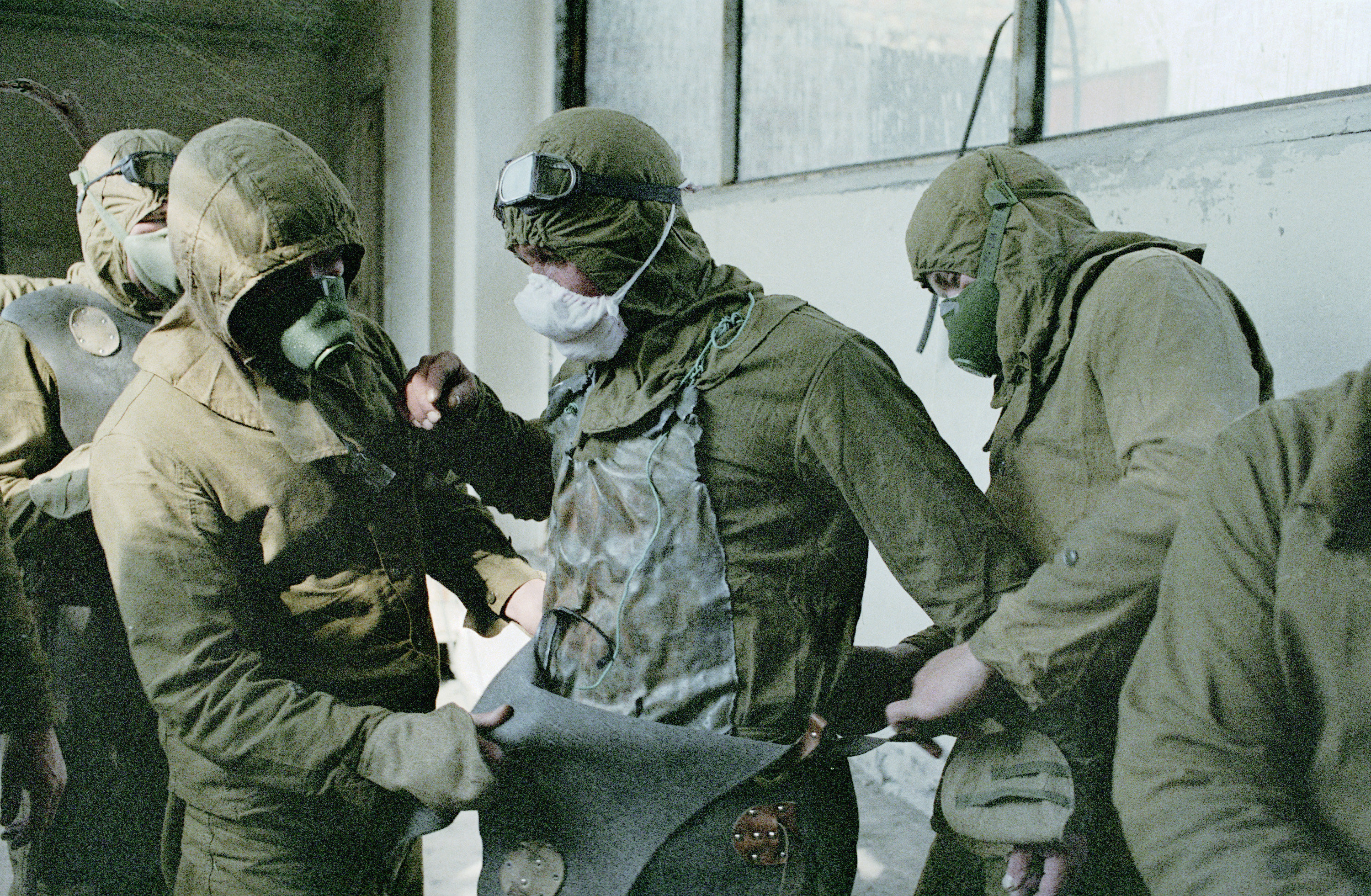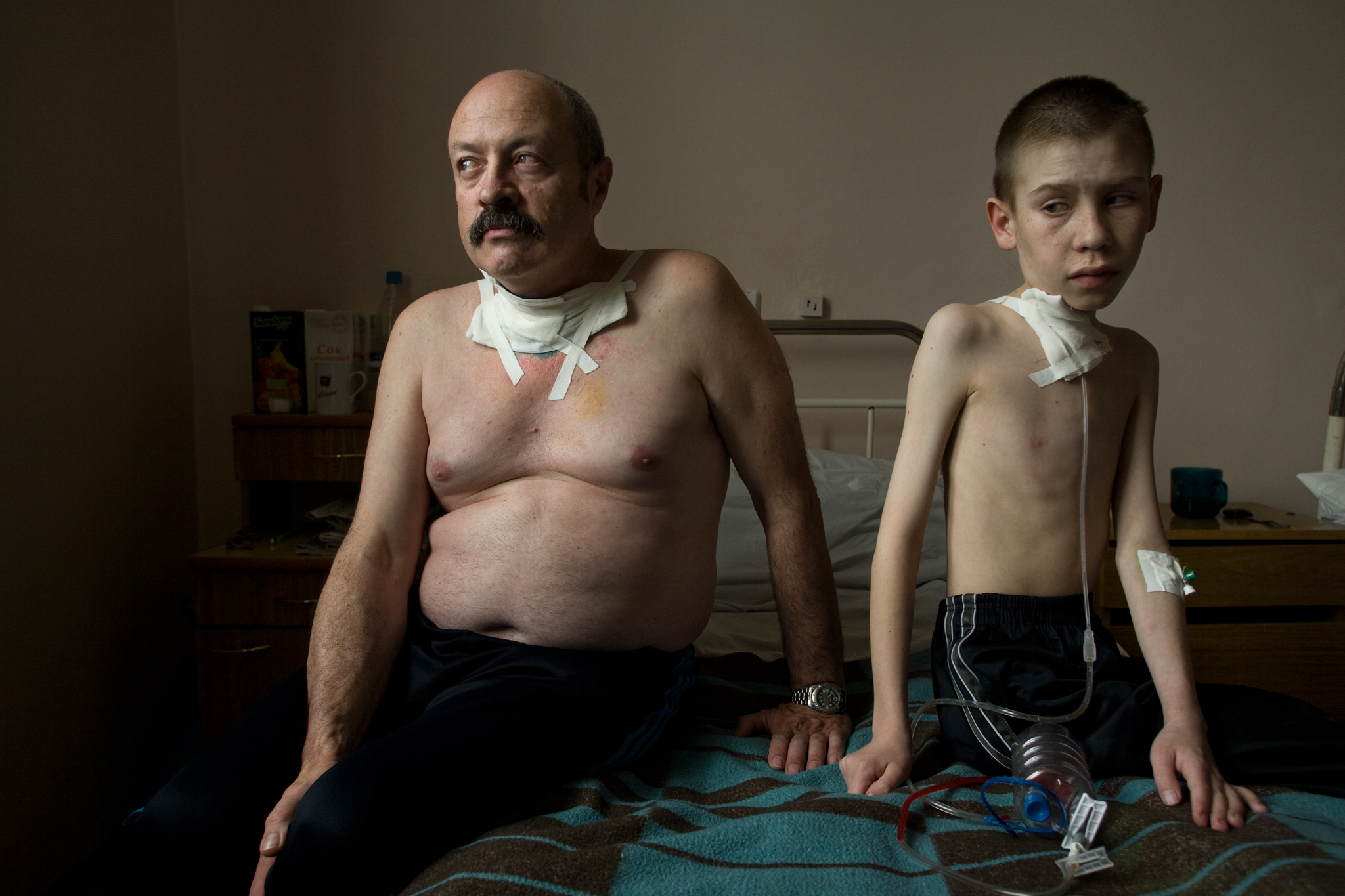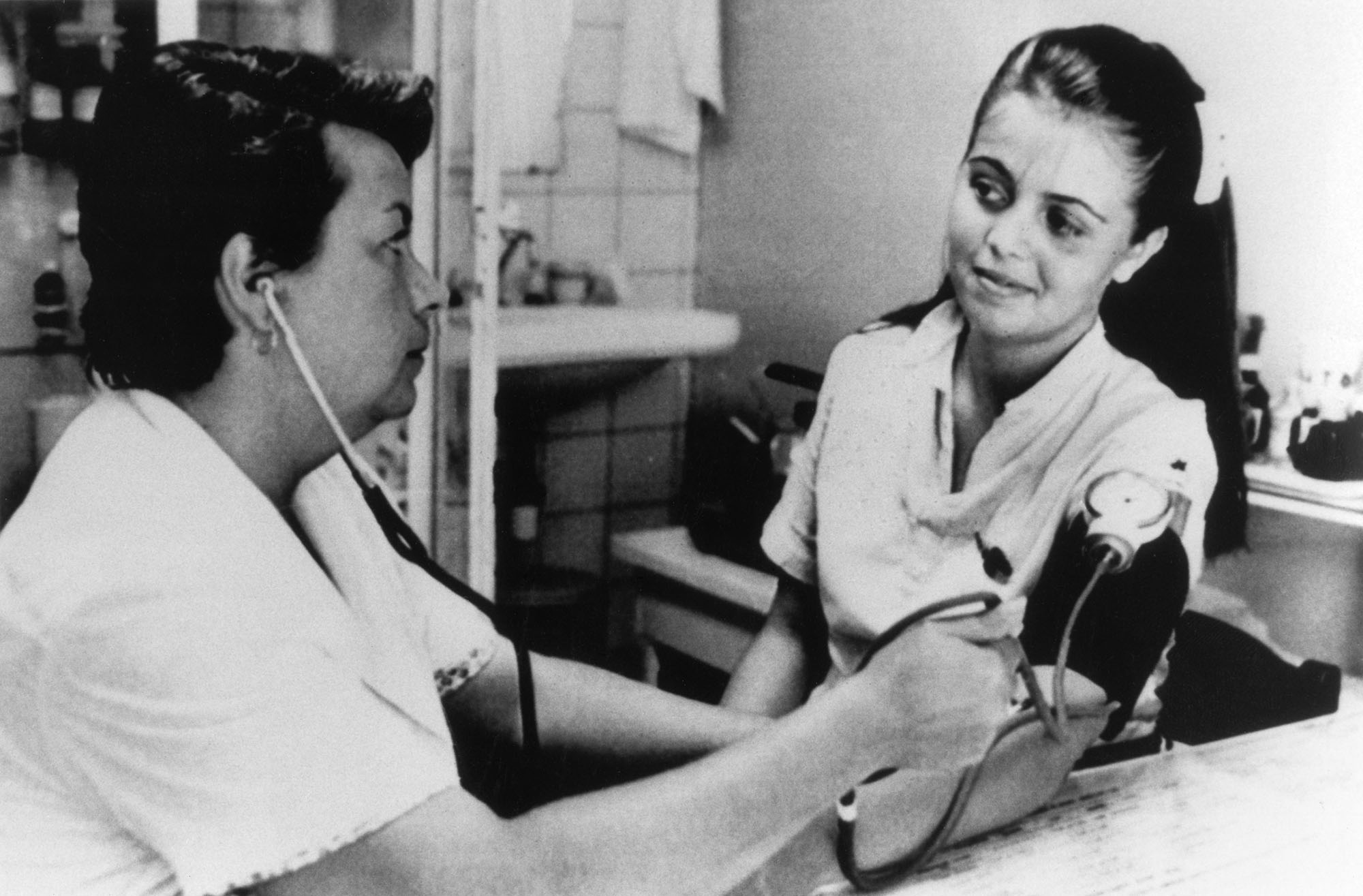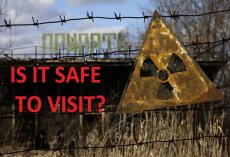After the accident
The malfunction of the core did not cause the explosion. Both explosions were thermal. Radiation made its path through the damaged roof of the burning reactor of the ChNEPP, which caused massive contamination of the surrounding grounds. Later radiation spread over larger areas.

The immediate retaliation tactic at the ChNEPP was fighting the spread of fires inside the facility and on the roof located above turbines. Soon, trained specialists of the special department of the fire brigade of the NPP itself together with firefighters from the neighboring town were stifling the fire for several very long hours after the initial blast. However, the graphite somewhere in the depth of the facility kept on burning vigorously.

The firefighters that were eliminating the catastrophe were not aware of the reasons of the fire so they simply covered the destroyed reactor with water. Such actions made the situation worse. A number of smaller explosions followed, which caused the emission of more pollutants. It was extremely important to prevent further contamination. Within hours, the area was covered with tons of mixtures that were supposed to prevent radiation from spreading. A blancket of the mixture containing clay, sand, dolomite, boron, and lead was thrown at the NPP from helicopters.
This stopped the graphite from burning and slowed down the emission of radiation in the environment. Only 14 days after, the soviet state authorities came to the decision to cover the destroyed power unit with a shelter — a reinforced concrete construction equipped with a heavy duty highly effective cooling unit. One of the most catastrophic events in our history led to radioactive substances rising to the height of 1,5 km. The southeasterly wind spread the polluted cloud over the territory of Scandinavia. Afterwards it returned to Ukraine. 24 hours after the initial blast the wind changed, it started to blow to the west. The second polluted cloud flew to Poland and Czechoslovakia, and later to Austria. In the Alps it cleaned and returned some Polish regions. Many specialists believe that every single square centimeter of our planet was somehow affected by the radioactive waste emitted by the NPP. Obviously, the most corrupted territories are the lands of Belarus and Ukraine. Citizens of the latter were evacuated forever due to the insurmountable amount environmental pollution.
Radioactive iodine was one of the core reasons why the pollutions spread. Its half-life period is short, so it has been acknowledged to be safe not long after the blast. Today the environment is polluted by various afterproducts of radiation, their decay period reaches 30 years. This means the contamination will be inflicting damage on the surrounding grounds for several decades. Americium and Plutonium will continue to poison the lands around for a couple of millennia. Luckily, their actual impact on the human organism is minor.
The health effects of the accident at Chernobyl have been the subject of numerous intensive studies. Here are the results.
Two people died during the accident itself; one was killed by the explosion and one suffered a heart attack. A third person died early the next morning from thermal burns (he was scalded by steam.) 237 people were initially diagnosed as suffering from acute radiation exposure and were hospitalized for treatment. Of those, 21 were estimated to have received doses ranging from 6 to 16 Gy (600 to 1600 RAD) over a short period of exposure. 20 of the 21 died in spite of intensive medical attention including some highly publicized bone marrow transplants.
Many of these highly exposed people were fire fighters who had severe thermal and radiation induced burns covering much of their body. These burns greatly complicated their treatment.
Twenty-one patients received acute doses of between 4 and 6 Gy (400 to 600 RAD). Of those 7 died. 55 people received acute doses between 2 and 4 Gy with one death. No deaths occurred among the 140 hospitalized people with exposures below 2 Gy.

Therefore, the immediate death toll from the accident was 31. Since the accident, 11 more deaths – possibly caused by radiation – have occurred among the population of highly exposed people, bringing the death toll to 42.
Some of the patients continue to require periodic treatment for radiation related illnesses. None of the highly exposed people were members of the general public; all received their exposure because of occupational responsibilities related to the nuclear plant or casualty control.
Long Term Radiation Effects
That answer rarely satisfies people who are curious about the effects of the accident. There have been far too many widely published stories about cancers, birth defects, thyroid disorders or other symptoms.
The best estimate of radiation related illness is that there have been approximately 500-600 excess cases of thyroid cancer, mostly in children, in the areas most affected by the radioactive fallout. As of early 1996, three deaths have been associated with this disease. There is some speculation among scientists that the potassium iodide pills given to prevent I-131 uptake by the thyroid may have contributed to the cancers. In areas where iodide was not administered, only two cancers have appeared.

There have been no excess leukemias, congenital abnormalities, adverse pregnancy outcomes or any other radiation induced disease in the general population.[1]
Other Health Effects
There have been other health effects from the accident that are far more disturbing, mainly because they could have been prevented.
One effect has been an increase in stress related illnesses. The stress can be attributed to both fear of radiation and to the severe dislocation of people caused by government ordered evacuations.
Many of the peasants in the area near the Chernobyl power plant lived in the same village where their ancestors had lived for centuries. In some cases, they were evacuated without any belongings or other resources, even when there was little chance of being exposed to additional doses of radiation.
The fear of radiation is a natural result of years worth of intensive propaganda campaigns and a general lack of knowledge of recorded health effects. People generally fear things they do not understand, especially when they have been repeatedly told by authority figures that their fear is justified.
The level of reported stress or psychological impact also seems to have been affected by the government program designed to compensate the victims. People who claim to have been negatively affected are eligible for regular cash payments, medical care and for special assistance in housing and job placements. These incentives provide ample reason to blame poor health on radiation exposure from Chernobyl.
Poor diets have also contributed to poor health in the region near the accident site. Because of stringent safeguards against potentially contaminated food, locally grown food is often discarded despite the minimal potential health impact. This action ignores the fact that vitamin deficiencies are far more dangerous than slight contamination and the fact that “clean” food is often unavailable. In some ways, the overall effect is similar to that of concerned mothers who switched their children from apples to processed snack foods in the wake of the 60 Minutes episode on Alar.
Another disturbing fact is that as many as 200,000 women decided to abort healthy fetuses because of concern that they might have been damaged in the womb by minor radiation exposures. There is no evidence of any birth defects caused by the radiation levels experienced by expectant mothers after the accident.

There has been an increase in alcoholism following the accident. Here are some explanatory quotes from Piers Paul Read’s book, Ablaze: The Story of the Heros and Victims of Chernobyl. “The extra allowance paid for the purchase of clean food was spent entirely on drink – vodka when they could get it, on wine when they could not.” And, “The idea that vodka was an antidote to radiation was widely accepted even by educated people. . .”
Lessons Learned
The lesson that should be learned from the study of Chernobyl’s health effects is that many of the worst potential effects of a nuclear accident can be prevented. Decision makers, including those who make decisions for their families, need to make the effort to educate themselves about radiation health effects.
In the aftermath of the Chernobyl accident, scientists, national authorities and local officials all proved themselves woefully ignorant of the potential effects of radiation exposure and unable to make decisions that minimized the overall health effects on the population.
In defense of the people who made poor decisions following Chernobyl, their ignorance can be attributed to the fact that nuclear information has been considered a high level secret in many nations. There was little readily available information or guidance.
In cases where scientists or physicians were consulted for their recommendations, their perceived credibility had more to do with rank or official position than with their knowledge of radiation health effects. Deferring to rank rather than knowledge or experience can be dangerous, especially if the information sources are defensive about their ignorance.
[1] During the preparation of the article were used the materials of the site https://atomicinsights.com/chernobyl-health-effects-best-available-data/








